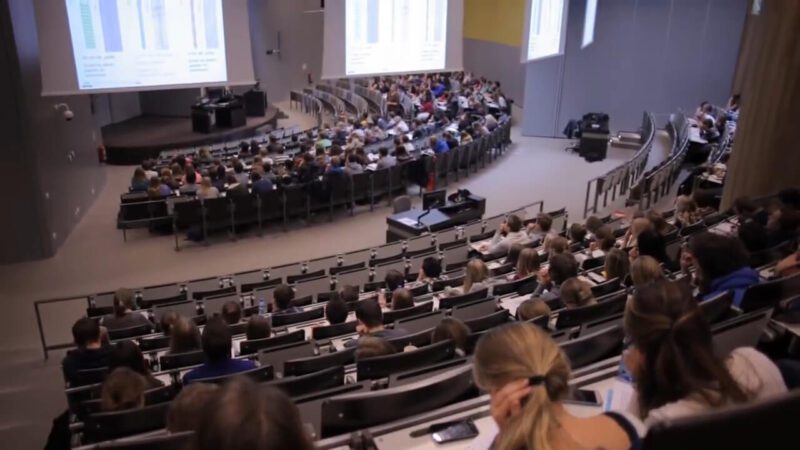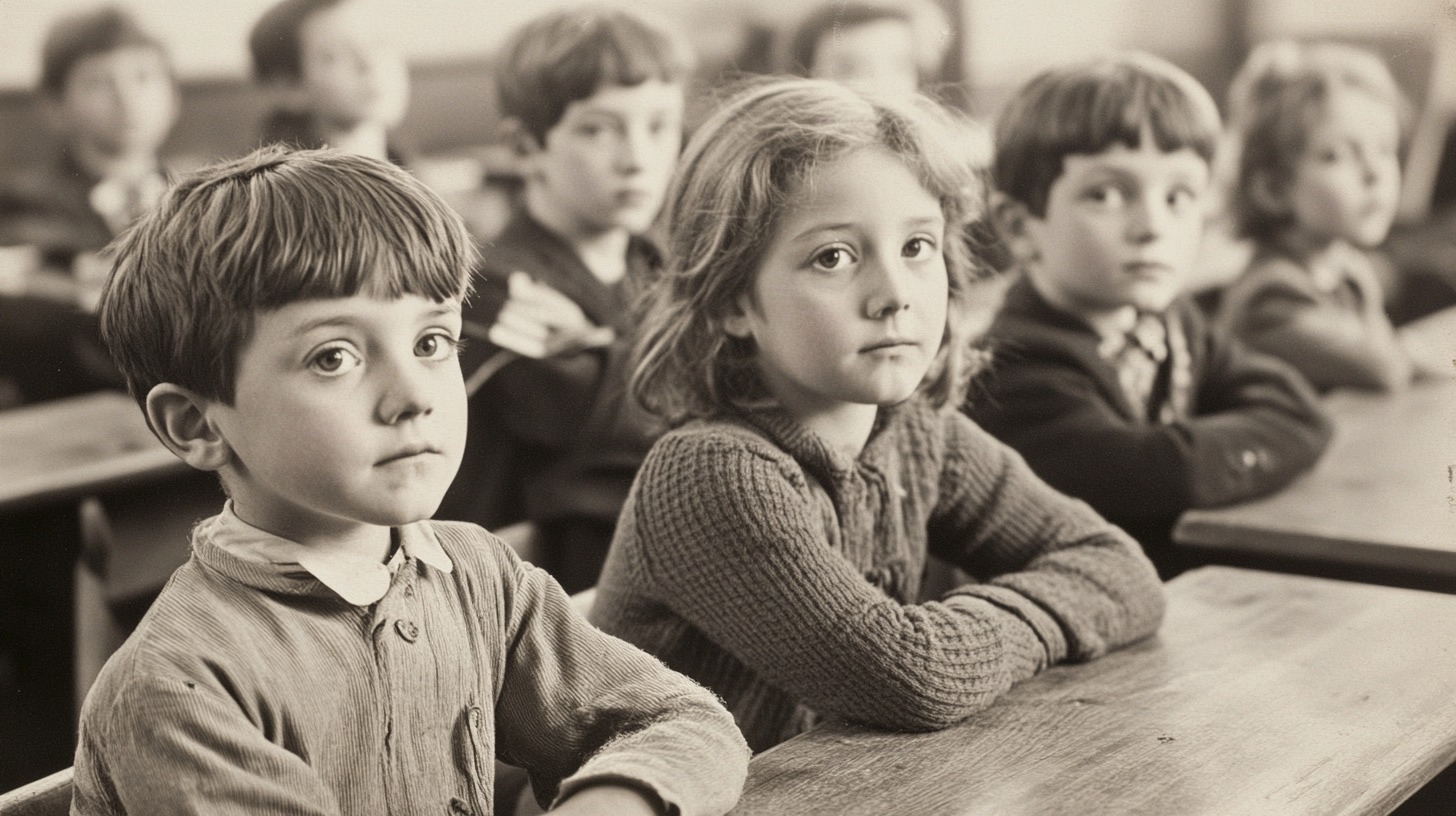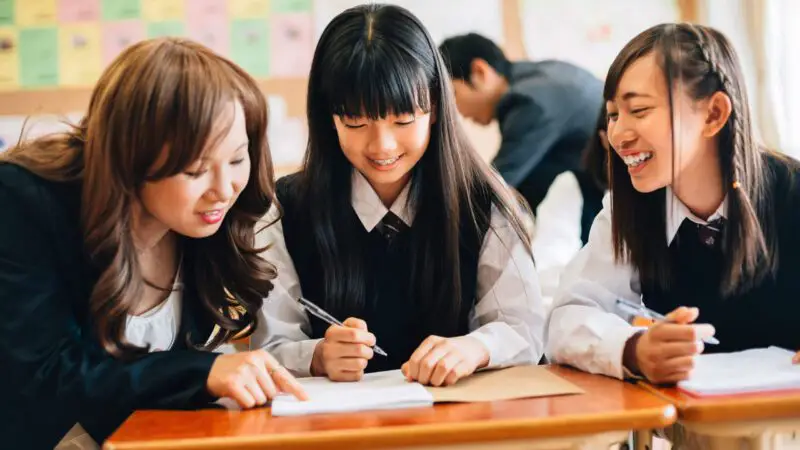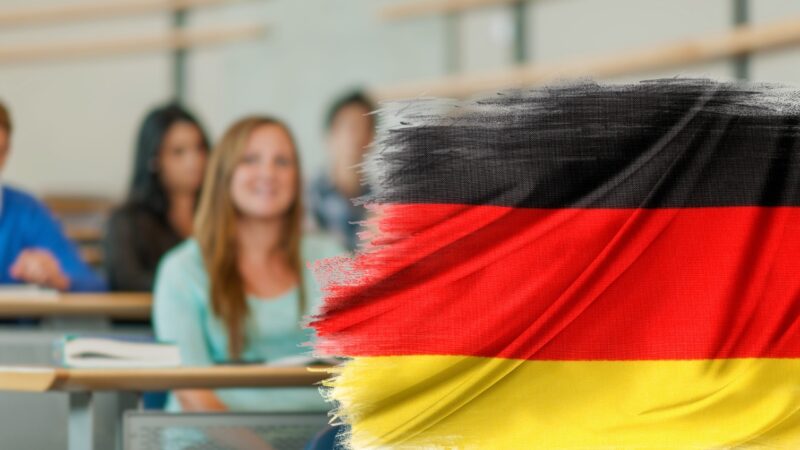What do you think about the education system in your country?
In his Forbes article, “A Decade of Public Opinion on Education,” Mike McShane examines how Americans’ views on education have evolved over the past ten years. He highlights that public opinion has shifted due to various factors, including policy changes, societal events, and emerging educational challenges.
McShane emphasizes the importance of understanding these trends to inform future educational policies and practices.
In a Medium article, Tavian Jean-Pierre highlights three positive aspects of modern education: increased accessibility, a diverse range of subjects, and the integration of technology. He acknowledges existing challenges but emphasizes the progress made in these areas.
View this post on Instagram
An education system brings together a network of essential elements that work to create structured learning paths. It generally includes public schooling from early childhood through secondary levels.
- Schools, districts, and governing bodies at both local and national levels, each playing a role in shaping the structure and standards
- Laws, policies, and regulations that create the standards, curricula, and guidelines needed for consistent education
- Funding systems that decide how resources are allocated throughout the system
Physical infrastructure forms a backbone for operations. This includes:
- School buildings and classrooms
- Administrative offices
- Transportation systems that make learning accessible
Human resources are the heart of any education system, covering:
- Teachers who lead and guide students
- Administrators who manage and support school operations
- Support staff who provide essential services and assistance
We will now share the ranked list and more details on why some countries are better than others in this segment.
@informative_vids Credit: YT Video: 6 Problems With Our School System – by Next School #fyp #school #teachers #student #education #teachersoftiktok #edutok
Top Countries with Leading Education Systems in 2025
| Rank | Country | Current Year Rank | Previous Year Rank |
|---|---|---|---|
| 1 | South Korea | 1 | 19 |
| 2 | Denmark | 2 | 10 |
| 3 | Netherlands | 3 | 11 |
| 4 | Belgium | 4 | 18 |
| 5 | Slovenia | 5 | 45 |
| 6 | Japan | 6 | 6 |
| 7 | Germany | 7 | 3 |
| 8 | Finland | 8 | 12 |
| 9 | Norway | 9 | 13 |
| 10 | Ireland | 10 | 21 |
| 11 | Singapore | 11 | 20 |
| 12 | United Kingdom | 12 | 2 |
| 13 | China | 13 | 23 |
| 14 | Hong Kong | 14 | – |
| 15 | Sweden | 15 | 9 |
| 16 | France | 16 | 5 |
| 17 | Australia | 17 | 8 |
| 18 | Iceland | 18 | – |
| 19 | Canada | 19 | 4 |
| 20 | Spain | 20 | 17 |
| 21 | Israel | 21 | 26 |
| 22 | Russia | 22 | 27 |
| 23 | Poland | 23 | 25 |
| 24 | Portugal | 24 | 24 |
| 25 | Latvia | 25 | 55 |
| 26 | Estonia | 26 | 42 |
| 27 | New Zealand | 27 | 15 |
| 28 | Switzerland | 28 | 7 |
| 29 | Lithuania | 29 | 60 |
| 30 | Hungary | 30 | 36 |
| 31 | United States | 31 | 1 |
| 32 | Taiwan | 32 | – |
| 33 | Greece | 33 | 29 |
| 34 | Czech Republic | 34 | 31 |
| 35 | Austria | 35 | 16 |
| 36 | Italy | 36 | 14 |
| 37 | Turkey | 37 | 30 |
| 38 | Argentina | 38 | 35 |
| 39 | Mexico | 39 | 40 |
| 40 | Chile | 40 | 49 |
| 41 | Slovakia | 41 | 50 |
| 42 | Luxembourg | 42 | 22 |
| 43 | Kazakhstan | 43 | 78 |
| 44 | Costa Rica | 44 | 62 |
| 45 | Saudi Arabia | 45 | 38 |
| 46 | Grenada | 46 | – |
| 47 | Brunei | 47 | – |
| 48 | San Marino | 48 | – |
| 49 | Fiji | 49 | – |
| 50 | Samoa | 50 | – |
| 51 | Seychelles | 51 | – |
| 52 | Mongolia | 52 | – |
| 53 | Vietnam | 53 | 65 |
| 54 | Ecuador | 54 | 73 |
| 55 | Malta | 55 | – |
| 56 | Nepal | 56 | – |
| 57 | Belarus | 57 | 64 |
| 58 | Oman | 58 | 63 |
| 59 | Saint Kitts and Nevis | 59 | – |
| 60 | Maldives | 60 | – |
| 61 | Sri Lanka | 61 | 79 |
| 62 | Macau | 62 | – |
| 63 | Uzbekistan | 63 | 80 |
| 64 | Kyrgyzstan | 64 | – |
| 65 | Saint Vincent and the Grenadines | 65 | – |
| 66 | Albania | 66 | – |
| 67 | Indonesia | 67 | 58 |
| 68 | Serbia | 68 | 57 |
| 69 | Timor Leste | 69 | – |
| 70 | Georgia | 70 | – |
| 71 | Philippines | 71 | 52 |
| 72 | Kiribati | 72 | – |
| 73 | Algeria | 73 | 67 |
| 74 | Colombia | 74 | 54 |
| 75 | Antigua and Barbuda | 75 | – |
| 76 | Croatia | 76 | 46 |
| 77 | Peru | 77 | 68 |
| 78 | Mauritius | 78 | – |
| 79 | Gibraltar | 79 | – |
| 80 | Montenegro | 80 | – |
| 81 | Iran | 81 | 81 |
| 82 | Bahrain | 82 | 59 |
| 83 | Liechtenstein | 83 | – |
| 84 | Egypt | 84 | 37 |
| 85 | Belize | 85 | – |
| 86 | Azerbaijan | 86 | 66 |
| 87 | Tajikistan | 87 | – |
| 88 | Bhutan | 88 | – |
| 89 | Malaysia | 89 | 39 |
| 90 | Kenya | 90 | 70 |
| 91 | Qatar | 91 | 33 |
| 92 | Nauru | 92 | – |
| 93 | Kuwait | 93 | – |
| 94 | Dominica | 94 | – |
| 95 | Bolivia | 95 | – |
| 96 | Dominican Republic | 96 | 69 |
| 97 | Saint Lucia | 97 | – |
| 98 | Armenia | 98 | – |
| 99 | Romania | 99 | 43 |
| 100 | British Virgin Islands | 100 | – |
| 101 | India | 101 | 34 |
| 102 | Laos | 102 | 88 |
| 103 | Uruguay | 103 | 61 |
| 104 | Tunisia | 104 | 72 |
| 105 | Eswatini | 105 | – |
| 106 | Ghana | 106 | 77 |
| 107 | Thailand | 107 | 44 |
| 108 | Moldova | 108 | – |
| 109 | Myanmar | 109 | 74 |
| 110 | North Korea | 110 | – |
| 111 | Venezuela | 111 | 98 |
| 112 | El Salvador | 112 | 90 |
| 113 | Morocco | 113 | 56 |
| 114 | South Africa | 114 | 41 |
| 115 | Jamaica | 115 | 89 |
| 116 | Panama | 116 | 75 |
| 117 | Solomon Islands | 117 | 77 |
| 118 | Cape Verde | 118 | 91 |
| 119 | Sao Tome and Principe | 119 | 94 |
| 120 | Cambodia | 120 | 83 |
| 121 | Togo | 121 | 67 |
| 122 | Bangladesh | 122 | 75 |
| 123 | Papua New Guinea | 123 | 64 |
| 124 | Tuvalu | 124 | – |
| 125 | Sierra Leone | 125 | 49 |
| 126 | Guatemala | 126 | 84 |
| 127 | Jordan | 127 | 98 |
| 128 | Suriname | 128 | 95 |
| 129 | Lesotho | 129 | 82 |
| 130 | Benin | 130 | 47 |
| 131 | Yemen | 131 | 70 |
| 132 | Honduras | 132 | 76 |
| 133 | Rwanda | 133 | 76 |
| 134 | Bulgaria | 134 | 51 |
| 135 | Ivory Coast | 135 | 90 |
| 136 | Pakistan | 136 | 58 |
| 137 | Djibouti | 137 | – |
| 138 | Sudan | 138 | 61 |
| 139 | Mauritania | 139 | 67 |
| 140 | Barbados | 140 | 100 |
| 141 | Cameroon | 141 | 78 |
| 142 | Eritrea | 142 | 77 |
| 143 | Burkina Faso | 143 | 34 |
| 144 | Cuba | 144 | 100 |
| 145 | Brazil | 145 | 32 |
| 146 | Afghanistan | 146 | 37 |
| 147 | Niger | 147 | 38 |
| 148 | Madagascar | 148 | 77 |
| 149 | Tanzania | 149 | 82 |
| 150 | Liberia | 150 | 48 |
| 151 | Burundi | 151 | 76 |
| 152 | Comoros | 152 | 62 |
| 153 | Marshall Islands | 153 | 98 |
| 154 | Senegal | 154 | 58 |
| 155 | Mali | 155 | 31 |
| 156 | Uganda | 156 | 81 |
| 157 | Bahamas | 157 | – |
| 158 | Gambia | 158 | 59 |
| 159 | Mozambique | 159 | 63 |
| 160 | Chad | 160 | 27 |
| 161 | Central African Republic | 161 | 37 |
| 162 | Guinea | 162 | 45 |
| 163 | Cyprus | 163 | 99 |
| 164 | United Arab Emirates | 164 | 98 |
| 165 | Aruba | 165 | 98 |
| 166 | Ukraine | 166 | 100 |
| 167 | North Macedonia | 167 | 98 |
| 168 | Niue | 168 | – |
| 169 | Turkmenistan | 169 | 99 |
| 170 | Trinidad and Tobago | 170 | 98 |
| 171 | Guyana | 171 | – |
| 172 | Puerto Rico | 172 | 92 |
| 173 | Palau | 173 | 97 |
| 174 | Lebanon | 174 | 71 |
| 175 | Bosnia and Herzegovina | 175 | 98 |
| 176 | Malawi | 176 | 68 |
| 177 | Namibia | 177 | 92 |
| 178 | Vanuatu | 178 | 89 |
| 179 | Ethiopia | 179 | 52 |
| 180 | Paraguay | 180 | 95 |
| 181 | Palestine | 181 | – |
| 182 | Tonga | 182 | 99 |
| 183 | Bermuda | 183 | – |
| 184 | Republic of the Congo | 184 | 81 |
| 185 | Botswana | 185 | 89 |
| 186 | Equatorial Guinea | 186 | 95 |
| 187 | Libya | 187 | 91 |
| 188 | Iraq | 188 | – |
| 189 | Nicaragua | 189 | 83 |
| 190 | Micronesia | 190 | – |
| 191 | Nigeria | 191 | 62 |
| 192 | Zimbabwe | 192 | 90 |
| 193 | Haiti | 193 | 62 |
| 194 | Gabon | 194 | 86 |
| 195 | Guinea Bissau | 195 | 54 |
| 196 | Angola | 196 | 72 |
| 197 | Syria | 197 | 86 |
| 198 | Zambia | 198 | 88 |
| 199 | DR Congo | 199 | 81 |
| 200 | Andorra | 200 | 100 |
| 201 | South Sudan | 201 | 35 |
| 202 | Somalia | 202 | 41 |
| 203 | New Caledonia | 203 | 97 |
| 204 | Guam | 204 | 100 |
| 205 | Cayman Islands | 205 | 99 |
| 206 | Greenland | 206 | 100 |
| 207 | American Samoa | 207 | 97 |
*According to WorldPopulation Review
Why South Korea Dominates Global Education?

South Korea’s education system ranks as the world’s best, driven by intense academic standards, a strong cultural commitment to learning, and a framework that evolves to meet modern educational challenges.
These elements form the core of a system that consistently excels in global rankings, achieving high proficiency levels in crucial subjects and preparing students effectively for professional success.
- Graduation Rate: 96.7%
- Literacy Rate: 98.8%
Unmatched Academic Rigor and Structure
South Korea’s curriculum prioritizes key subjects like mathematics, science, and language arts, cultivating analytical skills and adaptability in students. The system begins with foundational skills in primary school and expands to advanced academic subjects by secondary school.
To gain university admission, students face the College Scholastic Ability Test (CSAT), a rigorous, standardized exam that often determines career paths.
- Structured Curriculum: Starting in primary school, students focus on foundational subjects, and as they progress, they undertake more specialized courses in subjects like science, social studies, and English.
- High Proficiency Standards: South Korean students excel in international assessments in mathematics, science, and reading comprehension. This achievement reflects the effectiveness of South Korea’s approach, with students scoring well above global averages.
Cultural Dedication to Educational Achievement
Education is deeply valued in South Korean society, and this cultural significance influences both family dynamics and student dedication. Families prioritize academic success, investing substantial resources in private tutoring academies, known as hagwons, to supplement regular school learning.
- Commitment from Families: Many South Korean families allocate significant financial resources to ensure their children’s academic success, often viewing education as the most important investment.
- Support Beyond School: South Korean students typically spend extended hours at hagwons, which specialize in exam preparation, further enhancing their performance on assessments like the CSAT.
Modern Reforms for Student Well-being and Inclusivity
Recognizing the pressure students face, South Korea has introduced reforms aimed at improving well-being and educational equity.
The system has adjusted to emphasize critical thinking over rote memorization and has introduced career-focused pathways through Meister Schools, which prepare students for specific industries like technology, finance, and manufacturing.
- Reduced Testing Pressure: Reforms like the “Free Semester” program offer students a break from traditional testing, allowing exploration of non-academic interests.
- Expanded Career Pathways: Vocational high schools and Meister Schools provide career-specific training, meeting industry demands and broadening options beyond traditional academia.
Denmark – Free Education and High Literacy Rate

Denmark is renowned for its exceptional education system, boasting a 99% literacy rate and offering free education from kindergarten through university. Education is compulsory until the age of 16, ensuring a strong foundation for all students.
Danish universities are highly regarded and attract international students with their high-quality education and globally recognized degrees.
Denmark’s education system is structured around the European Credit Transfer System (ECTS), where students must complete 60 ECTS credits per semester to earn their degrees.
- Graduation Rate: 75.5%
- Literacy Rate: 99%
Many students from around the world choose Denmark for its outstanding educational opportunities and vibrant academic environment.
- Focus on critical thinking and problem-solving
- Strong emphasis on group work and collaboration
- Integration of technology in learning
Danish universities prioritize research and development, contributing to various fields of study.
Netherlands – Affordable Education with English-Taught Programs

Most universities in the Netherlands offer English-taught courses to accommodate international students, even though Dutch is the official language.
The lower cost of education compared to other countries makes the Netherlands an affordable option for students, contributing to its reputation as one of the countries with the best education systems.
Dutch universities are well-known for their excellence in teaching and research, attracting students from around the globe.
They offer degrees at the undergraduate, postgraduate, and doctoral levels, following the European Credit Transfer System (ECTS), where each academic year equates to 60 credits.
- Wageningen University & Research
- University of Amsterdam
- University of Groningen
- Utrecht University
- Vrije Universiteit Amsterdam

The Dutch education system follows the European credit transfer system, with each academic year equivalent to 60 credits.
- Graduation Rate: 81.7%
- Literacy Rate: 99%
Belgium – Multilingual Education and High PISA Score
In most European countries, 15-year-old school pupils’ scholastic performance in mathematics, science, and reading has gone backwards, according to the latest results from the Programme for International Student Assessment. https://t.co/38UVgj4mbj
— Brussels Signal (@brusselssignal) December 5, 2023
Belgium consistently performs above OECD averages, particularly in reading and science. The PISA 2022 report noted that 15-year-olds in Belgium achieved impressive scores in mathematics (489), reading (479), and science (491), surpassing many European and global counterparts making them one of the highest IQs in the world.
These results highlight Belgium’s emphasis on critical subjects, supported by a strong academic curriculum beginning in primary school and carrying into secondary education, where students focus on a broad mix of general, technical, or vocational education to meet various academic and career goals.
- Graduation Rate: 74.3%
- Literacy Rate: 99%
Multilingual Education and Accessibility
Belgium’s education system supports its multilingual society, offering instruction in Dutch, French, and German depending on the region, and making language proficiency a core part of primary education.
Starting at a young age, students learn both local languages and additional foreign languages, preparing them for broader European interactions and international studies.
Public primary and secondary education remains free, with minor material fees, ensuring that all students have access to quality schooling.
Diverse Pathways for Secondary Education

Belgium’s secondary education allows students to select one of several paths: general academic, technical, vocational, or art-focused, based on their interests and future aspirations. This structure provides flexibility, enabling students to pursue either higher education or direct career preparation.
Additionally, the system includes private, religious, and international schools offering programs like the International Baccalaureate (IB), catering to Belgium’s international population and preparing students for globally recognized qualifications.
Innovation in Standardized Assessment and Digital Learning
Reforms in the Flemish region have introduced standardized assessments in core subjects to ensure quality across all schools. These assessments monitor educational progress and guide improvements, setting Belgium apart with an emphasis on practical learning and teacher feedback.
Additionally, Belgium has an advanced digital education infrastructure, especially in the Flemish region, where digital tools for both management and teaching enhance educational accessibility and engagement. This digital focus helps prepare students for technological developments and modern workforce requirements.
Slovenia – Emphasis on Vocational Training and Quality Reforms
This country made the biggest breakthrough, going from 45th to the top 5 in the world.
The Slovenian education system is divided into primary, secondary, and tertiary levels, each offering high-quality education accessible to all. Early childhood education is widely available and includes inclusive programs designed for children with special educational needs, ensuring a supportive environment for diverse learners.
Slovenia ranks highly in enrollment for early childhood education, with over 80% of two-year-olds participating, setting a strong foundation for lifelong learning.
Primary and lower secondary levels focus on a well-rounded curriculum that emphasizes both core academics and personal development. At the secondary level, students choose between general, technical, and vocational paths.
This diversity in schooling options, coupled with Slovenia’s commitment to personalized learning, ensures that students receive education tailored to their skills and interests.
- Graduation Rate: 89.5%
- Literacy Rate: 99.7%
Emphasis on Vocational Training and Workforce Preparation
Slovenia is recognized for its robust vocational training, with over half of secondary students enrolled in vocational programs. These programs, supported by the government and industry, prepare students with the skills needed for specific professions.
Slovenia’s vocational schools often collaborate with local industries, allowing students to gain hands-on experience, a factor that boosts employment opportunities post-graduation.
The Slovenian Qualifications Framework (SQF) integrates vocational and academic qualifications, aligning them with European standards. This integration improves the mobility of Slovenian students across EU job markets, giving them an advantage in professional fields.
Quality Assurance and Education Reforms
Slovenia’s Ministry of Education has implemented comprehensive quality assurance measures, particularly in higher education. The Slovenian Quality Assurance Agency oversees this, ensuring that institutions maintain consistent standards.
Recent reforms also address lifelong learning, making adult education widely accessible through both formal and informal programs.
Accessible and Affordable Higher Education

Higher education in Slovenia is accessible and affordable, with public universities offering a range of programs. Many universities have adopted international standards, making Slovenia an attractive destination for foreign students, especially within the EU.
Public funding for education helps keep costs low, and the government provides scholarships, making it easier for students to pursue advanced degrees without financial strain.
Japan – Strong Cultural Support and Moral Development Focus
Japan consistently scores among the highest on international assessments like PISA, where over 20% of Japanese students achieve top levels in math, science, and reading.
Japan’s approach focuses on conceptual understanding and critical thinking, so students often graduate with subject knowledge comparable to college-level standards in other countries.
Did you know: Middle school grades are not a factor in college admissions process!
Strong Cultural and Parental Support

Education holds a significant place in Japanese culture, with families, schools, and society collaborating to support academic excellence. This dedication is evident in the commitment families make to their children’s studies, including providing resources for additional learning opportunities.
Schools also foster accountability among teachers and students through rigorous lesson-study programs, where educators observe and improve each other’s teaching methods.
- Graduation Rate: 99%
- Literacy Rate: 99%
Emphasis on Moral and Social Development
Japan integrates moral education into its curriculum, which guides students in building strong character traits such as perseverance, humility, and responsibility.
Schools actively recognize and reward behaviors that demonstrate social and personal responsibility, reinforcing values that complement academic achievements and prepare students for responsible citizenship.
Continuous Adaptation and Innovation
While Japan’s education system upholds traditional values, it also adapts to modern needs. Recent reforms emphasize career preparation and offer alternative paths beyond conventional academics, allowing students to specialize in vocational fields that directly connect to industry needs.
This flexibility ensures that Japan’s workforce remains skilled and adaptable, ready for the challenges of a global economy.
Germany – Robust Dual Education System and Skilled Workforce

Germany is a top destination for international students, known for offering high-quality, industry-relevant education at little to no cost. The country’s educational institutions are renowned for maintaining excellent standards.
In October 2014, Germany eliminated high tuition fees for both German and international students, further enhancing its appeal.
Under the European Credit Transfer System (ECTS), full-time students must complete 30 credit points per semester to fulfill their study program requirements, making Germany one of the countries with the best education systems.
- Strong focus on practical skills
- Close ties between academia and industry
- Affordable tuition fees at public universities
German universities are known for their cutting-edge research and technological advancements.
- Graduation Rate: 68.9%
- Literacy Rate: 99%
Finland – Innovative Curriculum and Balanced Skill Development
In Finland education is free for all level students according to the European Union. Schools receive funding based on student need rather than regional wealth, ensuring that even rural or disadvantaged areas maintain high-quality facilities and materials.
Every student benefits from services like free school meals, health care, and counseling, promoting overall well-being alongside academic achievement.
This commitment to equity fosters a learning environment where students feel supported and less pressured by competition.
- Graduation Rate: 80%
- Literacy Rate: 100%
Unique Approach to Assessment
Finland’s system limits standardized testing to reduce stress and allow for a more comprehensive, personalized learning experience. Students are evaluated individually, and teachers assess progress based on observations rather than rigid exams.
The only formal test, the National Matriculation Exam, is optional and taken at the end of upper-secondary school. This testing philosophy encourages students to focus on understanding rather than memorization, supporting a deeper engagement with subjects.
Highly Qualified Teachers and Innovative Curriculum
Teaching is a respected and competitive profession in Finland, with educators required to hold a master’s degree. Teachers design flexible, student-oriented lesson plans, ensuring that students’ unique needs are met.
This system entrusts teachers with the autonomy to adapt lessons, fostering a collaborative atmosphere that cultivates curiosity, critical thinking, and real-world problem-solving skills.
Balance Between Academic and Life Skills
Students in Finland start school at age seven, later than in most countries, which allows them time to develop socially and emotionally.
The curriculum includes practical life skills, arts, and physical education, in addition to core subjects. School days are shorter, with more breaks, giving students time to absorb what they learn.
Norway – Free Education and Significant Public Funding

Norway offers free education from primary through tertiary levels, funded and regulated by the government. This system ensures that students across socioeconomic backgrounds have access to quality education without financial burden.
In the national budget of 2023, the Norwegian Parliament decided to introduce tuition fees for international students from outside the European Economic Area and Switzerland according to the European Student Union.
Norwegian municipalities are responsible for primary and lower-secondary education, while counties manage upper-secondary schooling, making the system responsive to local needs and inclusive for all.
Efforts to reduce educational inequality extend into adulthood, as vocational and adult education are widely available and adaptable, allowing adults to enhance skills through modular programs.
Additionally, Norway’s support programs for recent immigrants and refugees incorporate language and social skills training, promoting seamless integration and reducing barriers to educational success.
- Graduation Rate: 81.8%
- Literacy Rate: 100%
Academic Rigor with a Focus on Student Well-being
The Norwegian curriculum integrates core subjects such as mathematics, science, and languages with life skills education that supports personal development and social responsibility. Early primary education does not use formal grading, creating a pressure-free environment where students focus on learning rather than competition.
National assessments are designed as diagnostic tools rather than ranking systems, providing constructive feedback for student growth rather than creating a performance hierarchy.
Reforms introduced over recent years have balanced academic standards with student-centered teaching approaches. These updates aim to ensure Norway’s system prepares students for both the workforce and personal development, fostering adaptability and emotional intelligence.
Continuous Improvement Through Reform
Norway’s approach to education reform is a model of adaptability and stakeholder engagement. Policies are frequently updated based on data and feedback from educators, unions, and local authorities.
For example, adjustments to national testing frameworks reduced the number of exams and shifted the timing to better support learning rather than ranking, which fosters a more cooperative and constructive educational environment.
Ireland – Government Support and Industry Collaboration in Education
Ireland is home to some of the world’s most respected universities, such as Trinity College Dublin, University College Dublin, and the National University of Ireland Galway.
These institutions are known for their world-class research facilities and connections to international industries, particularly in fields like pharmaceuticals, engineering, and information technology.
- Graduation Rate: 99%
- Literacy Rate: 99%
Government Support and Industry Ties

Ireland’s government has invested in enhancing the quality of education across the country, especially in high-demand areas such as data science, artificial intelligence, and biotechnology.
The focus helps graduates transition smoothly into the workforce, equipped with skills that meet current market demands.
Additionally, Ireland’s educational ties to industries like Google, Microsoft, and pharmaceutical giants mean students often have access to internships and hands-on training opportunities during their studies, which enhances their employability.
Inclusive and Welcoming Environment for Students
Irish society values inclusivity and community, creating a supportive environment for students. International students benefit from Ireland’s English-speaking advantage, making it easier for them to integrate into academic and social settings.
The United Kingdom and the United States Faced Significant Drops
The UK and the US, historically dominant in education rankings, have both experienced slips. In the UK, recent PISA scores have shown declines, particularly in mathematics and science, across its regions according to the Guardian.
Factors contributing to this include disparities in school funding, which disproportionately affect lower-income areas.
Although elite UK universities remain strong, the challenges at secondary levels suggest a need for policy adjustments to retain competitiveness.
In the US, declining investment in K-12 education, alongside an increased focus on localized, unequal funding systems, has led to decreased performance in core subjects like math and reading as noted by EPI.
Despite its robust higher education system, the US lags behind in secondary education performance compared to peers, with a drop from its previous top ranks as other countries close the gap.
Why is the Quality Index Important?
This category focuses on the overall effectiveness and performance of a country’s education system. The indicators used include:
- Public education system: How well the public school system operates.
- Willingness to attend university: The level of interest and participation in higher education.
- Number of research institutions: The availability and prominence of research institutions within the country.
- University funding and endowment: The financial resources available to universities.
- Specialization expertise: The presence of institutions that excel in specific academic or technical fields.
- Industrial linkage: The strength of connections between educational institutions and industries.
- Effectiveness of academic professionals: The competence and impact of educators and academic staff.
- Institutional research output: The amount and quality of research produced by higher education institutions.
- Performance in global rankings: How well a country’s higher education institutions fare in international rankings.
What About the Opportunity Index?
This category measures the accessibility and opportunities provided by the education system. The indicators used include:
- Adult literacy rates: The percentage of adults who can read and write.
- Graduation rates: The proportion of students who successfully complete their education.
- Primary school completion rate: The percentage of children who finish primary school.
- Secondary school completion rate: The percentage of students who complete secondary education.
- High school completion rate: The proportion of students who graduate from high school.
- Collegiate-level completion rate: The percentage of students who complete college or university.
- Government expenditure on education: The percentage of a country’s GDP spent on education.
Fun Fact: Missing school occasionally can actually boost creativity! A change of scenery, like a family trip or a day exploring hobbies, can spark new ideas and give your brain a refreshing break
My methodology for research
To rank education systems by country, I combined personal observations with data from reputable sources. Here’s how I approached it:
Data Collection
I gathered information from international assessments and reports, including:
- Program for International Student Assessment (PISA): Evaluates 15-year-old students’ abilities in reading, mathematics, and science.
- Trends in International Mathematics and Science Study (TIMSS): Assesses mathematics and science knowledge of fourth and eighth graders.
- OECD’s Education at a Glance: Provides data on the structure, finances, and performance of education systems.
Criteria for Evaluation
I focused on several key indicators:
- Academic Performance: Student scores in PISA and TIMSS assessments.
- Educational Attainment: Percentage of the population completing tertiary education.
- Equity and Inclusivity: Access to quality education across different socio-economic groups.
- Investment in Education: Public expenditure on education as a percentage of GDP.
- Quality of Educators: Teacher qualifications and student-teacher ratios.
Data Analysis
I normalized the data to ensure comparability across countries. This involved adjusting for factors like population size and economic disparities.
Weighting and Scoring
Each criterion was assigned a weight based on its perceived impact on educational quality. For instance, academic performance and educational attainment were given higher weights.
Ranking Calculation
I calculated composite scores for each country by summing the weighted scores across all criteria. Countries were then ranked based on these composite scores.
Personal Observations
Having studied in both Germany and Finland, I observed firsthand the emphasis these countries place on education. Germany’s dual education system effectively combines vocational training with academic study, while Finland’s student-centered approach fosters critical thinking and creativity.

Limitations
While this methodology strives for objectivity, it has limitations:
- Data Availability: Not all countries have comprehensive data for every criterion.
- Cultural Differences: Educational values and practices vary, which may influence the effectiveness of certain systems.
- Rapid Changes: Educational reforms can quickly alter a country’s standing, and annual data may not capture these shifts immediately.
Reference and URLs
- oecd.org – https://www.oecd.org/en/publications/education-at-a-glance-2024_c00cad36-en.html
- blogs.tuni.fi – https://blogs.tuni.fi/eoto/eoto/systems-of-education-in-finland-and-germany/
- the-unl.com – https://the-unl.com/comparative-analysis-of-education-systems-finland-usa-japan-germany-and-russia-587
- stepofweb.com – https://stepofweb.com/best-education-system-in-european-countries/
- oecd-ilibrary.org – https://www.oecd-ilibrary.org/content/publication/3197152b-en
- humanium.org – https://www.humanium.org/en/finlands-children-centric-school-system-a-global-model-for-success/
- dw.com – https://www.dw.com/en/what-is-germanys-dual-education-system-and-why-do-other-countries-want-it/a-42902504
- dhla.org – https://www.dhla.org/the-german-dual-education-model/
- johnnyholland.org – https://johnnyholland.org/2024/02/dual-education-system-in-germany-academic-learning/
- studying-in-germany.org – https://www.studying-in-germany.org/german-education-system/
- en.wikipedia.org – https://en.wikipedia.org/wiki/Dual_education_system
- oecd-ilibrary.org – https://www.oecd-ilibrary.org/education/data/oecd-education-statistics/pisa-programme-for-international-student-assessment_data-00365-en
- link.springer.com – https://link.springer.com/article/10.1007/s11125-005-1824-4
- nces.ed.gov – https://nces.ed.gov/timss/pdf/naep_timss_pisa_comp.pdf
- en.wikipedia.org – https://en.wikipedia.org/wiki/Programme_for_International_Student_Assessment
- aqi.org.uk – https://www.aqi.org.uk/briefings/pisa-timms-or-pirls-how-do-we-rank-those-doing-the-ranking/
- finlandeducationhub.com – https://finlandeducationhub.com/exploring-the-finnish-approach-to-inclusive-education/
- stepofweb.com – https://stepofweb.com/which-country-in-europe-has-the-best-education-system/
At the end
A robust education system is vital for national growth and individual development. Top-ranking countries like South Korea, Denmark, and Slovenia demonstrate that comprehensive frameworks, cultural support, and consistent reforms can significantly enhance academic and vocational outcomes.
These nations focus on foundational skills, practical applications, and personalized learning paths, creating environments where students excel.
South Korea benefits from rigorous academic standards and a strong cultural commitment to education. Denmark emphasizes accessibility and critical thinking, establishing itself as a global education leader.
Slovenia prioritizes vocational training and workforce readiness, highlighting the importance of diverse educational pathways.
Japan and Finland balance academic rigor with student well-being, serving as models of educational innovation.
Conversely, declines in the United Kingdom and the United States underscore the complexities within global education systems. Addressing funding disparities, updating curricula, and reassessing standardized testing are crucial to maintaining high educational standards.
What do you think about the education system?

